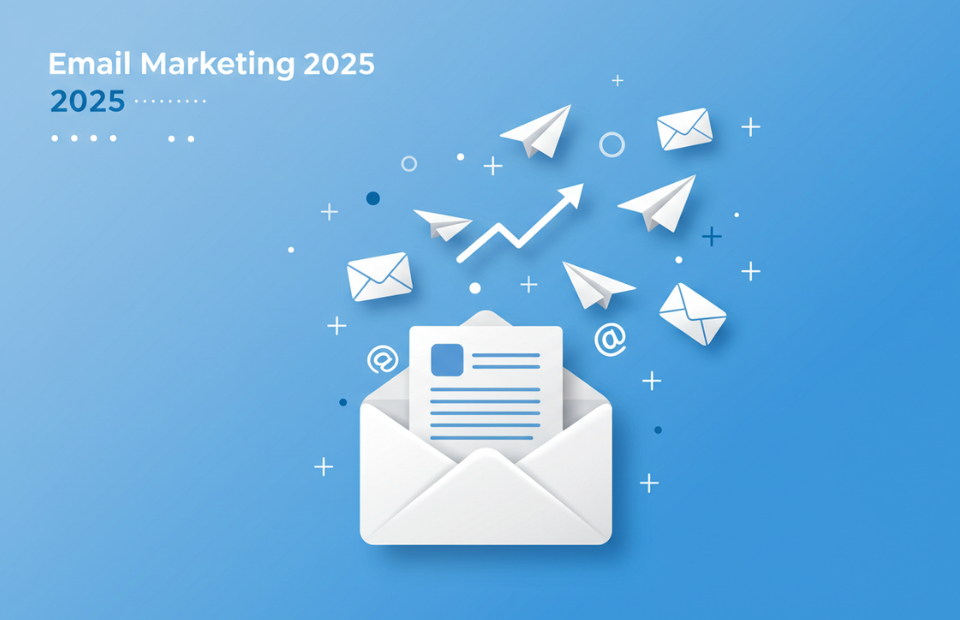In today’s digital age, email marketing remains one of the most effective ways to connect with your audience, build relationships, and drive conversions. Whether you’re a small business owner, a marketer, or an entrepreneur, starting an email marketing campaign can help you reach your goals. However, success doesn’t happen by chance—it requires careful planning, strategy, and execution. Here’s a step-by-step guide to launching a successful email marketing campaign.

1. Set Clear Goals
Before diving into email marketing, define what you want to achieve. Are you trying to increase sales, drive website traffic, promote a product launch, or nurture leads? Setting clear and measurable goals will help you determine the success of your campaign. For instance:
- Grow your email list by 20% in three months.
- Achieve a 10% click-through rate on promotional emails.
- Increase revenue from email campaigns by 15% this quarter.
Having specific objectives will also guide your content and strategy.
2. Understand Your Target Audience
A successful email campaign starts with understanding your audience. Who are they? What are their interests, pain points, and preferences? Conduct research to identify your audience’s demographics and behavior patterns. Use tools like surveys, customer feedback, and analytics to gain insights.
Segmentation is key here. By dividing your email list into specific groups based on factors like age, location, purchase history, or interests, you can send more personalized and relevant emails. This leads to higher engagement rates and better results.
3. Build a Quality Email List
Your campaign’s success depends on the quality of your email list. Avoid purchasing email lists; instead, focus on building an organic list of engaged subscribers. Here are some strategies to grow your list:
- Create compelling lead magnets: Offer something valuable in exchange for email addresses, such as eBooks, discount codes, free trials, or exclusive content.
- Use sign-up forms: Place opt-in forms on your website, blog, or social media pages. Make them easy to find and simple to complete.
- Host webinars or events: Use these opportunities to collect email addresses from attendees.
- Encourage referrals: Incentivize your existing subscribers to refer friends or colleagues.
Remember to comply with email marketing laws like GDPR or CAN-SPAM by obtaining explicit consent from subscribers and providing an option to unsubscribe.
4. Choose the Right Email Marketing Platform
An email marketing platform is essential for managing campaigns, automating emails, and tracking performance. Popular platforms like Mailchimp, Constant Contact, HubSpot, and ConvertKit offer user-friendly tools for creating professional emails.
When choosing a platform, consider factors like ease of use, pricing, automation features, and analytics. Many platforms also offer templates that make designing emails quick and easy.
5. Craft Compelling Content
The content of your emails should grab attention and provide value to your subscribers. Here are some tips for creating engaging emails:
- Write an irresistible subject line: Your subject line is the first thing recipients see. Make it short, clear, and intriguing to encourage opens.
- Personalize your emails: Address subscribers by their first name and tailor content based on their preferences or past interactions.
- Focus on value: Provide useful information, exclusive offers, or actionable tips that align with your audience’s interests.
- Include a clear call-to-action (CTA): Whether it’s “Shop Now,” “Download the Guide,” or “Learn More,” make sure your CTA is prominent and encourages action.
- Use visuals wisely: Incorporate high-quality images or videos to make your emails visually appealing but avoid overloading them with media that could slow load times.
Keep your tone consistent with your brand voice and ensure your content is easy to read on both desktop and mobile devices.
6. Automate Your Campaigns
Automation can save you time and improve efficiency. Many email marketing platforms allow you to set up automated workflows based on triggers like subscriber actions or specific dates. Examples of automated emails include:
- Welcome emails for new subscribers.
- Abandoned cart reminders for e-commerce customers.
- Birthday or anniversary promotions.
- Follow-ups after a purchase or event.
Automation ensures timely communication while maintaining a personalized touch.
7. Test Before Sending
Before hitting “send,” test your emails to ensure everything works as intended. Check for:
- Typos or grammatical errors.
- Broken links or incorrect CTAs.
- Proper formatting on different devices (desktop, mobile, tablet).
- Images loading correctly.
Most email platforms offer preview and testing options so you can see how your email will appear in recipients’ inboxes.
8. Analyze Performance Metrics
Once your campaign is live, monitor its performance to gauge its effectiveness. Key metrics to track include:
- Open rate: The percentage of recipients who opened your email.
- Click-through rate (CTR): The percentage of recipients who clicked on a link within your email.
- Conversion rate: The percentage of recipients who completed a desired action (e.g., making a purchase).
- Bounce rate: The percentage of emails that couldn’t be delivered.
- Unsubscribe rate: The percentage of recipients who opted out of your list.
Analyzing these metrics will help you identify what’s working and where improvements are needed. Use A/B testing to experiment with different subject lines, content formats, or CTAs to optimize future campaigns.
9. Stay Consistent
Consistency is crucial in building trust and maintaining engagement with your audience. Develop an email schedule that aligns with your goals and stick to it. Whether you send weekly newsletters or monthly updates, ensure you’re providing value consistently without overwhelming subscribers.
10. Focus on Compliance
Email marketing laws vary by region but generally require transparency and respect for subscribers’ privacy. To stay compliant:
- Always get explicit consent before adding someone to your list.
- Include an easy-to-find unsubscribe link in every email.
- Avoid misleading subject lines or deceptive practices.
- Respect data protection regulations like GDPR if you’re targeting audiences in the EU.
Following these guidelines not only keeps you compliant but also builds trust with your audience.
Conclusion
Starting a successful email marketing campaign takes time, effort, and strategy—but the results are well worth it. By setting clear goals, understanding your audience, crafting compelling content, and analyzing performance metrics, you can create campaigns that resonate with subscribers and drive meaningful results for your business.
Remember, email marketing is not just about selling—it’s about building relationships. Focus on delivering value to your audience consistently, and over time, you’ll see increased engagement, loyalty, and conversions. Happy emailing!


